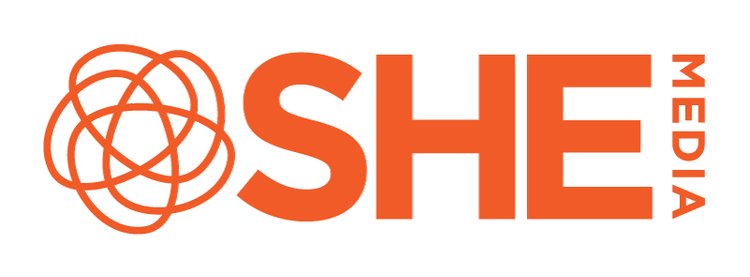What is the Difference Between CPM Vs. RPM?
How are CPM and RPM different, and which one should I pay attention to?
CPM is an acronym for cost per mille (mille=one thousand) and is describing what advertisers pay you for each 1,000 ad impressions successfully delivered on your site. If a campaign has a $3 net CPM and you deliver 1,000 impressions of that campaign, you’ve just earned $3. Congrats!
CPMs will range from pennies to over $30, depending on the campaign. When we talk about eCPM, we’re looking at the total number of ad impressions delivered and the total revenue, then figuring out an average CPM for your site.
For example, if you deliver a million ad impressions in a month and earn $2,000 total, your eCPM for that month is $2, even though your ad inventory included CPMs above and below that amount. Here’s the math: $2,000 / 1,000,000 = $0.002. This is the average amount you earn for each ad impression. Multiply that by 1,000, and you get $2 per 1,000 ad impressions.
So what is RPM then?
RPM (revenue per mille) is measuring how much revenue you earn for each 1,000 pageviews. The amount earned for all of your ad impressions will still vary depending on the campaign, but RPM looks only at the revenue earned for 1,000 total pageviews, with each pageview including however many ad impressions you have on the page.
For example, if you have 250,000 pageviews and earn $2,000 total, your RPM is $8. Here’s the math: $2,000 / 250,000 = $0.008. This is the amount you earn per pageview. Multiply that by 1,000, and you get $8 per 1,000 pageviews.
Which one should you use to monitor your site’s financial health?
While looking at RPM can be useful if you want to quickly figure out how much you’ve earned on a particular post or how much traffic you need to sustain to meet your revenue goals, focusing on RPM alone and working to bring it up is likely to backfire. Here’s why: The fastest way to increase your RPM is to place additional ad units on each page. The more ads per page, the higher the RPM.
But, if you think about your own online experiences, you likely recall at least one time (if not many), where a poor ad experience caused you to bounce. Maybe the experience was frustrating enough to keep you from returning to the site ever again. Placing too many ads on your site will cost you readers in the long run, and reduce the total number of ad impressions you deliver. Your RPM might hold steady (or even rise), even while your actual revenue falls due to a decrease in your traffic.
Too many ads per page will also damage your site’s viewability scores. Low viewability scores will block your access to higher-paying campaigns that have viewability requirements, further hurting your ability to earn. Often, publishers looking only at RPM are not aware of how many ad impressions they had to deliver to earn each month’s income, or of what their eCPM is.
Is it okay to only look at RPM for my site’s revenue performance?
Relying solely on RPM as a guide can lead to decisions that drive down your eCPM, and you’ll find yourself needing more and more ad units to sustain the RPM.
eCPM is a more specific and transparent indicator of your site’s revenue health. Here’s why: Strong CPMs are tied to high viewability scores and quality content. The percentage of campaigns with viewability requirements of 70% (and higher) is rapidly increasing, even on the programmatic exchanges. Understanding the earning power of each ad space allows you to be more strategic about placement. As you optimize your site to increase your viewability scores and improve your eCPM, you’ll also be creating a more favorable space for your readers, with fewer, better performing, ads. Happy readers come back, and they click around your site more, too. You’ll also be in touch with the total amount of ad inventory you’re delivering, which is a good metric to have.
But a $5 RPM sounds like it would be better than a $2 eCPM, right?
Not necessarily. Here are two scenarios to consider: let’s say your site gets 100,000 pageviews a month and has 5 ad units per pageview. Which scenario would you choose: someone offering you $5 RPM or $2 eCPM?
Scenario One
RPM = $5.00
100,000 monthly pageviews (number of ad units doesn’t apply to RPM)
100,000 pv @ $5 per 1,000 pageviews (RPM)
= $500 monthly revenue
Scenario Two
eCPM = $2.00
100,000 monthly pageviews
100,000 pageviews * 5 ad impressions per pageview
= 500,000 ad impressions
500,000 ad impressions @ $2.00 per 1,000 impressions (CPM)
= $1,000 monthly revenue
It’s typical for RPM to be higher than CPM since most sites tend to have more than one ad unit per page, but it’s important to remember that these two methods of measuring revenue performance can’t be considered an apples-to-apples comparison without converting one of them to the other form.
To get a quick idea of what your RPM is, just take your eCPM and multiply that by the number of ad units per page. So, for example, if you have a $1.50 eCPM and 6 ad units per page, your RPM is roughly $9.
Have additional questions about CPM or RPM? Feel free to contact us at support@sheknows.com.
